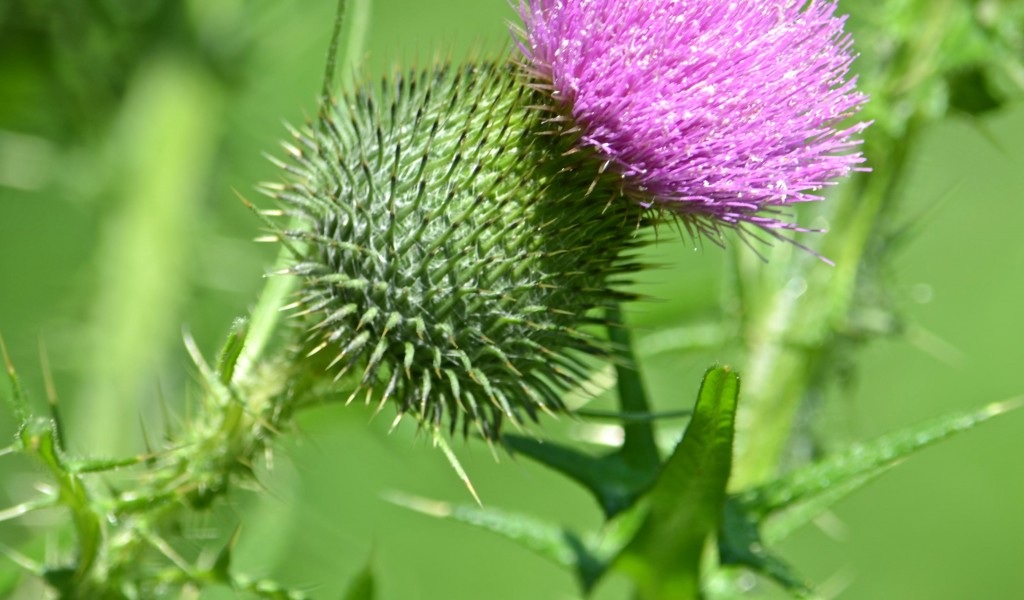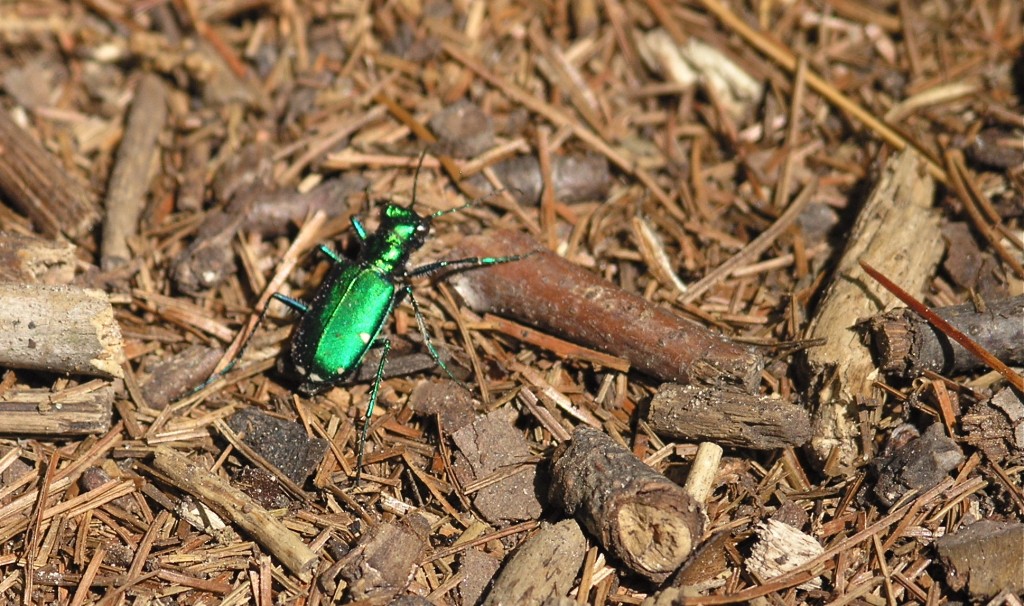About 6 feet tall and gangly. The seedheads release an anise scent if crushed. Aster family. Native.
Prairie Coneflower, Yellow Coneflower, Gray-headed Coneflower (Ratibida pinnata)

 In the meadow of wonders. This is about 6 feet tall and very prickly. A biennial that may only flower the second year. Unpalatable to grazing animals, but good nectar source for insects, and birds eat the seeds. You could peel, cook and eat the stems, or the tap roots of young plants, but my that would be a task. Native to Europe and Asia, considered a noxious weed in some states.
In the meadow of wonders. This is about 6 feet tall and very prickly. A biennial that may only flower the second year. Unpalatable to grazing animals, but good nectar source for insects, and birds eat the seeds. You could peel, cook and eat the stems, or the tap roots of young plants, but my that would be a task. Native to Europe and Asia, considered a noxious weed in some states.
Bull Thistle, Spear Thistle (Cisium vulgare)
Now I’m going to be posting the loads of plants all blooming in one place—Wilson Mountain—mostly in this amazing meadow, and a couple where I got lost back in the woods! Let’s start with Creeping Bellflower—apparently this is a bad invasive in some states, but it’s beautiful. I only saw a couple of plants. I wonder if next year it will try to take over the meadow. Campanula family. (Campanula means “bell.”) Native to Europe and western Siberia.
Creeping Bellflower, Rampion Bellflower (Campanula rapunculoides)
This big plant and several others, all blooming, are around an area that’s usually swampy but this year it’s dry. I was surprised to see it because all the ones in people’s gardens finished blooming weeks ago. Beautiful! This is the same woods that has the regular mountain laurel. Heath family. Native to eastern North America.
Great Laurel, Great Rhododendron (Rhododendron maximum)
Bonus picture: The rhododendron was along a shady trail, a very short walk from a sunny field full of fleabane, black-eyed susan, and red clover.
When Indian Pipe is first emerging, it looks like a few Q-Tips buried up to their eyebrows.
Indian Pipe is not a fungus. It’s a flowering plant related to Rhododendrons and blueberries. The flowers are pollinated by bumblebees. This plant does not have chlorophyll to make its nutrients, so it lives parasitically by tapping into fungi that live in the soil (and are obtaining THEIR nutrients from tree roots, usually beech and pines). (This is also how Ladyslipper plants get established, and it makes sense that this particular area supports a big population of both these plants–with soil full of organic matter and lots of surface litter.) So they can grow in the dark because they don’t use the sun. And, they can’t be transplanted, because they need their connection to the underground fungus, which needs its tree roots. As they age, they turn black. The name is from the way they look like little pipes stuck in the ground. According to one reference, they’re very fragrant, which seems hard to believe– and another says humans can’t detect a scent, but they attract bees nonetheless. The roots were chewed by native people to ease toothache. (Thanks to A.F. Donna for spotting these first!)
Indian Pipe, Ghost Plant, Corpse Plant (Monotropa uniflora)
Bonus picture from this hike: someone else enjoying a spot of sun.
 When we were photographing the Bristly Locust, a couple of these showy iridescent beetles were zooming around and grabbing our attention. A.F. Irit felt they really should get their own post. Now that I know the name, I can see the six spots, three on each wing. Evidently they are super fast, often outrunning their prey by so much that they lose track and have to stop and re-orient themselves to their desired lunch.
When we were photographing the Bristly Locust, a couple of these showy iridescent beetles were zooming around and grabbing our attention. A.F. Irit felt they really should get their own post. Now that I know the name, I can see the six spots, three on each wing. Evidently they are super fast, often outrunning their prey by so much that they lose track and have to stop and re-orient themselves to their desired lunch.
Six-spotted Tiger Beetle (Cicindela sexguttata)